

The path to innovation isn’t always clear, according to executives in the property/casualty insurance industry.
Carrier Management reached out to industry leaders recently, asking questions about innovation efforts. Here we publish the responses from 14 of them who described some of the roadblocks:
Q5: What is the biggest obstacle to innovation within the insurance industry? Explain. What is your company doing (or what can the industry do) to overcome this obstacle?
Galanski (Navigators): The biggest obstacles to innovation in the U.S. insurance industry are regulatory requirements and the historical willingness of courts to seek deep pockets to pay claims regardless of coverage. It is increasingly difficult to simply express a grant of insurance coverage. As a result, our policies have become more complex and legalistic rather than simplified.

Watson (Argo): Insurers are a fickle bunch. We are inherently risk averse and for good reason. But to be truly innovative involves taking risk. There’s that traditional threshold of what is and what isn’t acceptable, but regardless of an insurer’s risk appetite, we need to embrace a level of uncertainty we may not be terribly comfortable with. Now more than ever, we need to challenge the status quo with an open and inquisitive mind. We must start rethinking everything to respond to change effectively for our customers and ourselves.
McGavick (XL Catlin): We’re not fast enough. We need to innovate faster to outpace the risks that our clients are facing or will be facing. Insurance has relied too long on hindsight to develop and price products. Change continues to pick up speed. Therefore, we can’t expect to make judgments on today’s risks based on long data sets—meaning the industry can’t afford to collect 10 years of data before providing a solution. Whole industries will come and go in that time frame.
We need to be more forward thinking. To help us, we’re connecting with both industry and nonindustry partners to seek their expert advice, pool resources and intellectual horsepower to see what we can do together.
I stress the importance of collaboration—both inside and outside of the organization—to break down innovation obstacles.

Lightfoot (Guy Carpenter): One potential obstacle is taking on expensive, longer-term projects that are outside a company’s comfort zone. While it’s important to have a clear view of how innovation fits with the company’s long-term strategy, in my view it’s equally important to break the work into smaller pieces so the company can see the value and recognize benefits in a shorter time frame while still working toward the longer goal.
Ward (Hamilton): A few barriers come to mind when one thinks about our industry and innovation.
First, the regulatory system heavily favors existing products and players. In the name of consumer protection, consumer choice is getting short shrift. If each state mandated the size, shape, type and color of cars or clothing sold in its state, what would we be wearing or driving right now?
Second, the legal environment in which the industry operates has created incomprehensible products. We, as an industry, are so focused on what and how to exclude coverage that we forget that a normal person has to read our actual policy. So we have to ask ourselves whether we’re creating a greater problem than the one we’re solving.
[ijtv id=”11578″ width=”340″ float=”left”]Last, we tend to be hostages of our own traditions. Because we’ve always done something a certain way, we think it has to be that way forever. Technology is meant to liberate us to think about problems that machines inherently can’t solve. If we spend all of our mental energies in the manufacture of today’s products, we’ll never think about new sources of risk and better ways of doing things.
Lupica (ACE): We are facing a climate of increasing regulation both domestically and globally. And this climate has the potential to stifle innovation while adding unnecessary complexity and costs for insurers, with little benefit for policyholders.
ACE is engaged at the state, federal and international levels on the subject of a global insurance capital standard. We support the U.S. insurance industry and U.S. state regulators in urging federal regulators, including the Treasury and the Federal Reserve, to resist changes to capital standards that would unnecessarily raise costs and hurt U.S. insurance buyers. (See related article, “International Capital Standards: A Risk Management Mirage,” by ACE Limited CRO Sean Ringsted and Patricia Henry, ACE’s executive vice president of global government affairs.)
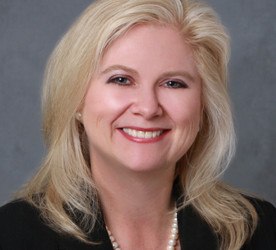
Hay (KPMG): Property/casualty businesses are operating in a highly competitive and complex environment, whether they’re tackling legacy IT infrastructure, attracting and retaining the right talent, or meeting regulatory compliance requirements. The fragmented nature of the P/C industry makes it difficult for one player to amass a great amount of cash to invest or disrupt other companies and keeps insurers mired by inflexible systems, products and filings.
Technology will be one of the key engines of change, providing knowledge of customers through data analytics and customer interfaces through social media, smartphone technology and other channels. Having a flexible and agile infrastructure enables companies to better manage complex and varying regulatory requirements worldwide and provide the actuarial and statistical underpinnings of new products, pricing and risk management.
Once managed and run by the IT team, it’s time change management in information technology areas is elevated to a higher level of decision-makers and, ultimately, into the boardroom. Aligning big data and analytics with the business strategy requires top-down implementation and the investment in infrastructure to support these business needs.
Equally as important, as baby boomers begin to retire and fierce competition for generation-Y candidates heats up, it’s more critical than ever that insurers create a culture that attracts talent like data scientists.
Hendrick (XL Catlin): When dealing with new risks, you have little data to go on. You don’t always have robust information to support your product development or underwriting decisions. To overcome that obstacle while still maintaining our drive for innovation, we quite often limit our net exposure on new and emerging risks, allowing us to gain more knowledge about the risk and potential losses.
[ijtv id=”12260″ width=”340″ float=”right”]Rao (PwC): The biggest obstacle to innovation within the insurance industry is complacency and the mindset that insurance is a highly regulated industry with very little scope for innovation. PwC’s CEO Survey has consistently shown over the past few years that the insurance industry is one of a handful of industries—in the same group as entertainment, media and technology—that is facing significant business model disruption. Using regulation as an excuse for inaction will leave the door open for external players to disrupt the insurance industry.
Kelley (Ironshore): One of the significant obstacles is industry hesitancy to adopt a new product or service for discretionary insurance coverage. There is often a lag between the time a product is launched to the time when the coverage generates significant adoption to earn market share. Market buyers of an innovative product introduction tend to wait to see how the product evolves in terms of meeting market demand in a designated specialty business line. At Ironshore, we believe that offering support services that can serve to educate and inform the market on product attributes can be invaluable for achieving timely product success.
Wurzler (OneBeacon Technology): I would say mainframe-based legacy systems that do not readily lend themselves to Internet-based interactions or the use of mobile technologies.

Rios (American Modern): We, ourselves, are the biggest obstacle. Too often in the insurance industry we say something can’t or won’t be done. When I went to an online direct-to-consumer startup personal lines insurer 20 years ago, people told me I was crazy—that no one would ever buy insurance on the Web.
(Editor’s Note: Rios, who started his career at Allstate in 1985, went on to become chief underwriting officer of Homesite Insurance in 1999 and CUO of United Services Auto Association in 2007, before joining specialty insurer American Modern in 2011.)
Sciolla (Gen Re): Legacy systems are certainly one of the biggest roadblocks for innovation in our industry—and how they hamper our ability to compete with new threats and challenges. The cost is one problem, but it’s really the speed at which we can respond with insurance solutions. We might want to take advantage of technological innovations, but our infrastructure can get in the way.
We are making great progress on our own transformation with a major resource commitment. Not all companies can make that commitment.
Lee (AIR Worldwide): The starting point for effective catastrophe risk management is the collection and transfer of high-quality, detailed global exposure data. While companies in the insurance industry have made progress on improving the quality of their data, the absence of agreed-upon data standards continues to be a hurdle in understanding and managing risk.
AIR has long been a proponent of open standards. We developed UNICEDE—an open data format—in 1993, and we made it available to the industry via a public website, unicede.com. AIR was also the first catastrophe modeling firm to support ACORD’s exposure data standards, and our software platforms were the first to be certified by ACORD for the implementation of those standards. Recently, AIR once again demonstrated our commitment to facilitate accurate and transparent data exchange by publishing Touchstone’s CEDE database schema.
(Editor’s Note: CEDE, or Catastrophe Exposure Data Exchange, is the exposure database format used by Touchstone, AIR’s comprehensive risk management platform that was first released in early 2013.)
Read more Innovation Insights by Person:
Read other innovator’s response by question:
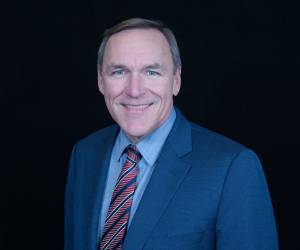 Stanley A. Galanski, President and CEO, The Navigators Group, Inc.
Stanley A. Galanski, President and CEO, The Navigators Group, Inc. Mark E. Watson III, President and Chief Executive Officer, Argo Group International Holdings, Ltd.
Mark E. Watson III, President and Chief Executive Officer, Argo Group International Holdings, Ltd. Kevin H. Kelley, Chief Executive Officer, Ironshore Inc.
Kevin H. Kelley, Chief Executive Officer, Ironshore Inc. John Wurzler, President, OneBeacon Technology Insurance
John Wurzler, President, OneBeacon Technology Insurance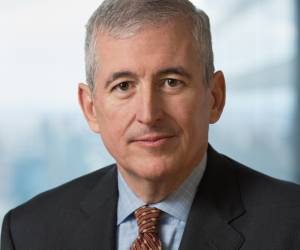 Alan B. Colberg, President and Chief Executive Officer, Assurant, Inc.
Alan B. Colberg, President and Chief Executive Officer, Assurant, Inc. Manny Rios, President and CEO, American Modern Insurance Group
Manny Rios, President and CEO, American Modern Insurance Group Dave Pratt, General Manager, Usage-Based Insurance, Progressive
Dave Pratt, General Manager, Usage-Based Insurance, Progressive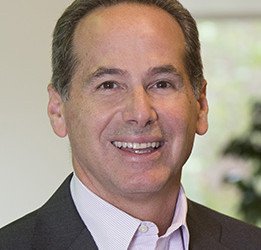 Berto Sciolla, EVP and Manager of North American Treaty Reinsurance,Gen Re
Berto Sciolla, EVP and Manager of North American Treaty Reinsurance,Gen Re Greg Hendrick, Chief Executive, Insurance, XL Catlin
Greg Hendrick, Chief Executive, Insurance, XL Catlin Anand Rao, Principal, PwC U.S. Advisory Practice
Anand Rao, Principal, PwC U.S. Advisory Practice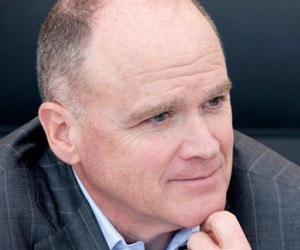 Mike McGavick, Chief Executive Officer, XL Catlin
Mike McGavick, Chief Executive Officer, XL Catlin David M. Lightfoot, Managing Director, Head of GC Analytics – Americas, Guy Carpenter
David M. Lightfoot, Managing Director, Head of GC Analytics – Americas, Guy Carpenter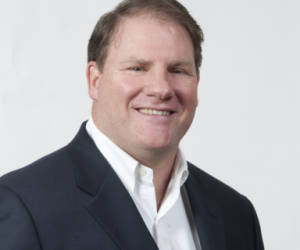 Conan Ward, Chief Executive Officer, Hamilton USA
Conan Ward, Chief Executive Officer, Hamilton USA Ming Lee, Chief Executive Officer, AIR Worldwide
Ming Lee, Chief Executive Officer, AIR Worldwide Laura Hay, National Insurance Sector Leader, KPMG LLP
Laura Hay, National Insurance Sector Leader, KPMG LLP John Lupica, Vice Chairman, ACE Group; Chairman, Insurance–North America
John Lupica, Vice Chairman, ACE Group; Chairman, Insurance–North AmericaGet all 16 interview neatly packaged in a single PDF download. Explore ideas by personality and by question. More than 60 pages of content.